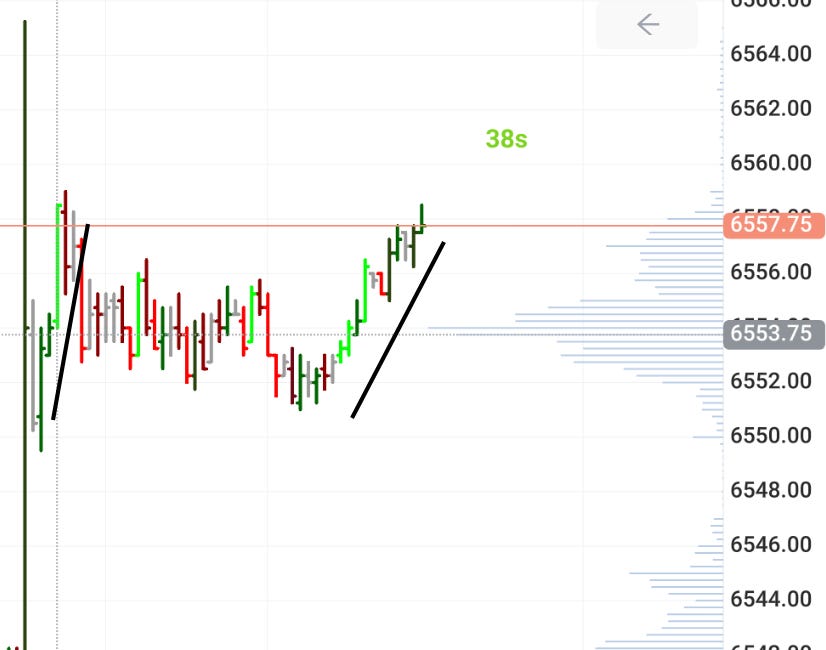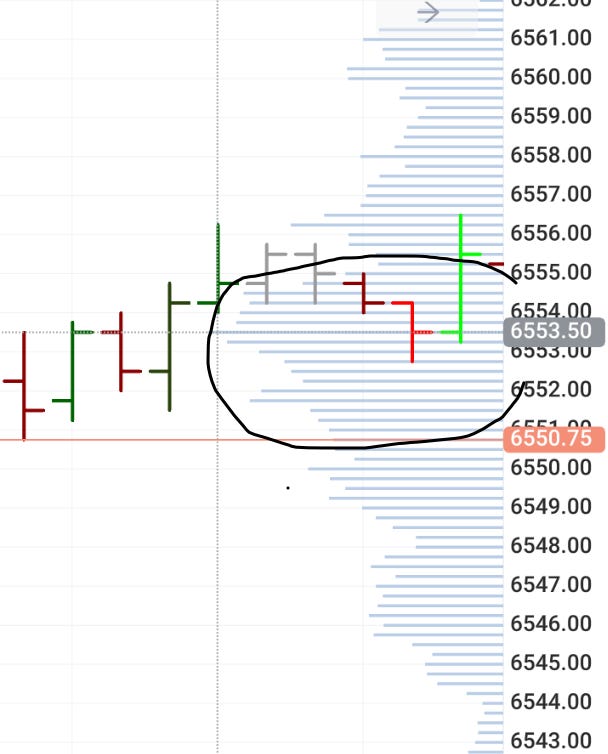The Statistics of Certainty: Where Variance Dies
This morning, the tape once again did something that “should” be impossible.
At 9:30, the open setting of tempo — aligning perfectly with the pre-market conditioning.
Fake Flush -> 6553 (Repeat 3X)
6553 has now pulled the tape back twice. A third repeat isn’t coincidence — it’s an echo. Each flush only reinforces the hinge, conditioning the market to snap back faster. If it echoes again here, that’s not random; that’s authored recursion.
Then, by mid-morning, the market gravitated back toward the hinge, resolving in a vertical correction that erased drift and collapsed variance.
At almost 11:00 a.m., the largest traded volume of the session printed exactly at the authored hinge. This isn’t random clustering. It’s the tape performing accounting: writing the receipts where presence has already prescribed the level.
Why this matters
Variance dies at hinges. Instead of drifting through chop, price compresses into a single vertical bar.
POC follows authorship. The point of control wasn’t discovered — it was written in advance.
Tempo persists. Once the hinge is authored, it continues to echo, setting structure for both intraday resolution and the close.
Traditional frameworks (Value at Risk, portfolio variance, benchmark tracking) force allocators to wait through uncertainty. Here, variance is not managed — it is bypassed. At hinges, the market doesn’t “find” value. It submits to it.
The Statistics of Certainty
Think about what unfolded today:
The hinge was identified before the open.
Echoes replayed at that hinge multiple times.
By 11 a.m., the Point of Control (largest traded volume) aligned exactly at the authored hinge.
By chance, what are the odds of this happening?
A typical morning range might cover ~20 price levels.
The probability of picking the single level that becomes POC is ~1/20 = 5%.
Add in the odds of getting two echoes at the same hinge — already vanishingly small.
Add in the fact it was all called before the open, not after.
Stacking those probabilities compounds the unlikeliness: the chance this is random collapses toward zero.
That’s why it feels like variance itself is dying: because it is.
The tape isn’t wandering — it’s being authored.





